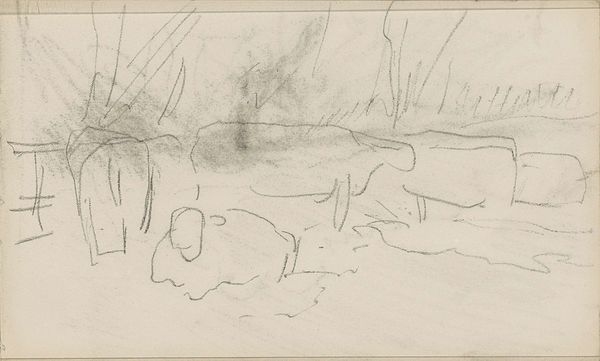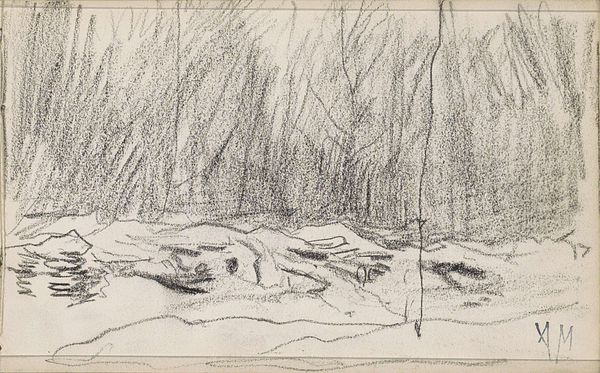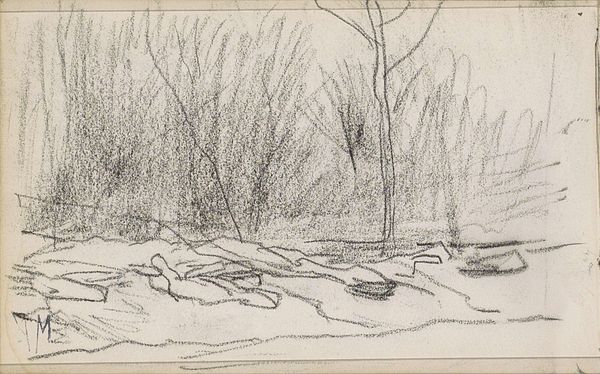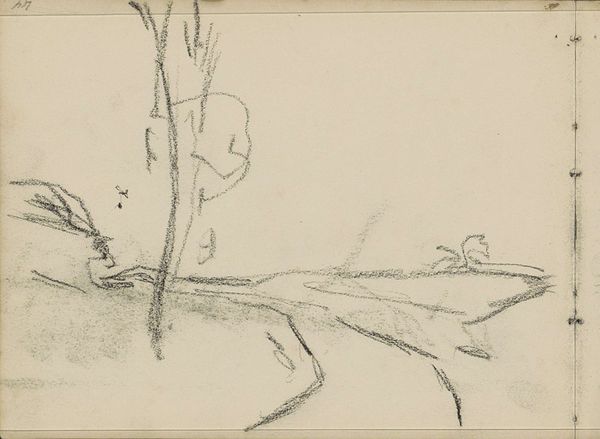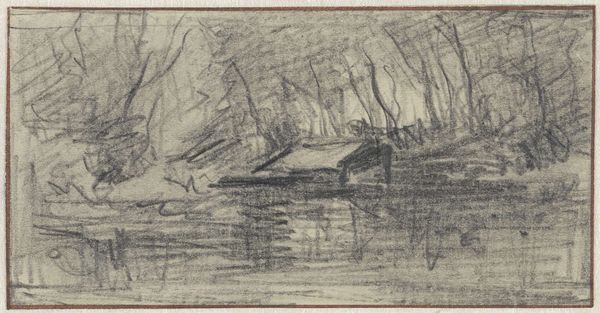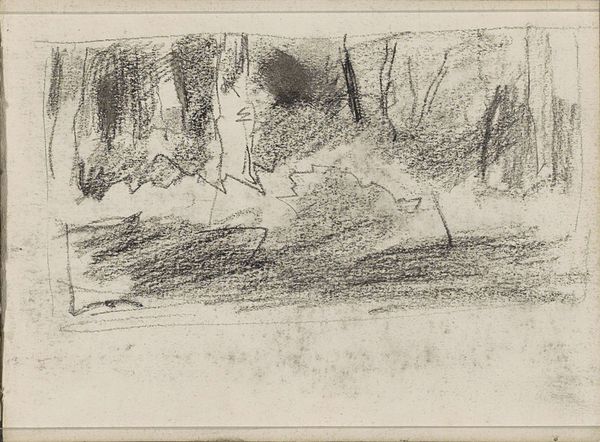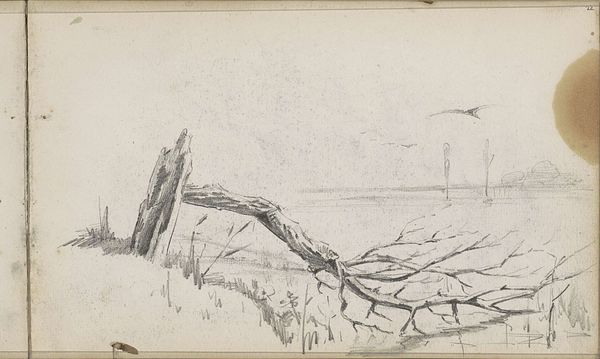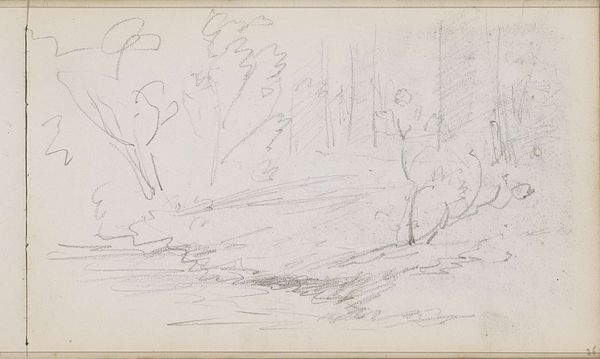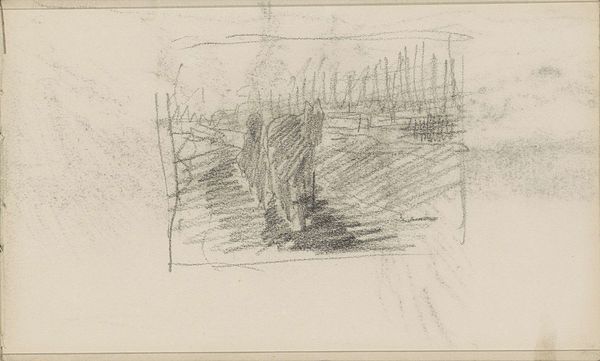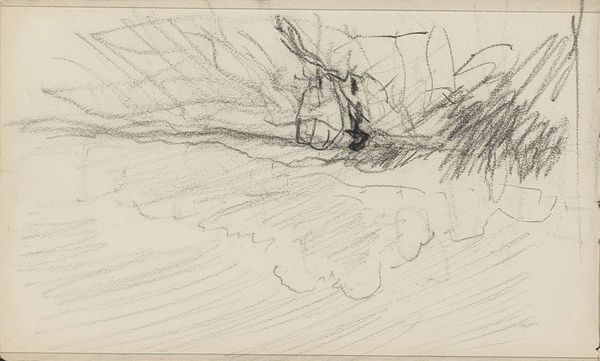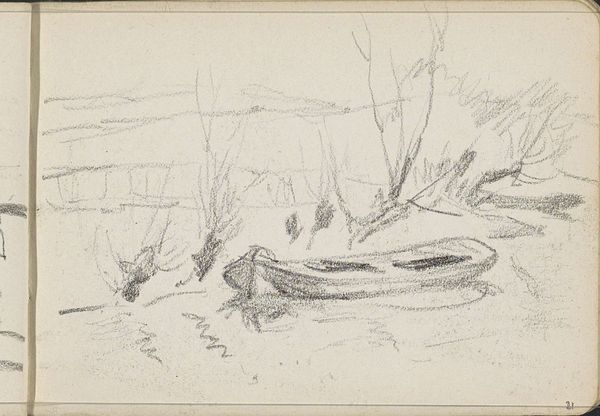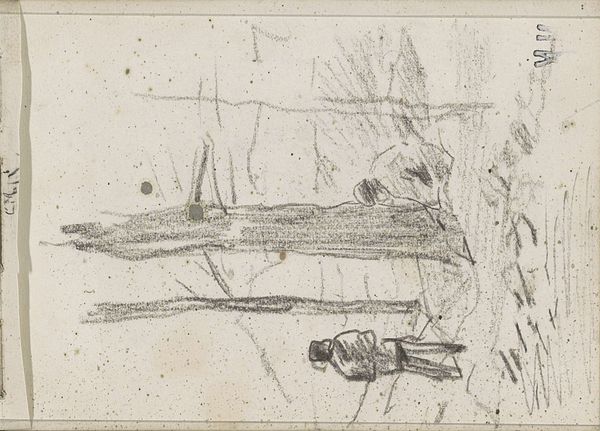
drawing, pencil
#
drawing
#
amateur sketch
#
light pencil work
#
impressionism
#
pen sketch
#
incomplete sketchy
#
landscape
#
form
#
personal sketchbook
#
ink drawing experimentation
#
pen-ink sketch
#
pencil
#
sketchbook drawing
#
sketchbook art
#
realism
#
initial sketch
Copyright: Rijks Museum: Open Domain
Editor: This quick sketch, "Weiland omgrensd door bomen en een hek," made between 1848 and 1888 by Anton Mauve, feels so immediate, like a captured moment. It's just pencil on paper, very simple, but I’m curious, what can we read into its raw execution? Curator: Its simplicity is precisely where the richness lies. Notice how Mauve’s rapid strokes delineate not just form, but also texture – the rough bark of the trees versus the interwoven strands of the fence. This emphasis on the physicality of the landscape mirrors a growing interest in portraying the working environment, reflecting a societal shift toward valuing manual labor and its connection to the land. Do you think the apparent casualness challenges traditional, academic drawing? Editor: Absolutely. It feels like a departure from highly finished works, focusing instead on the process of seeing and recording. Does this choice of material, just humble pencil and paper, impact its interpretation? Curator: Critically so. Pencil, as a readily available and inexpensive material, democratized art-making. No longer solely reliant on the patronage of wealthy clients who funded expensive oils, artists could now document the world around them more freely. This informs how we view both artist and the context. How does knowing its in the Rijksmuseum changes your read? Editor: That's interesting to consider. Being displayed in the national museum gives it a weight and permanence, contrasting with the sketch's temporary and fleeting quality. The museum transforms it into something to be studied rather than something quickly jotted down. Curator: Precisely! And this act of preservation raises important questions: Who decides what is valuable, what labor should be conserved and celebrated and how those decisions influence the production of artistic output. It's a good reminder that how art is shown really shapes our perceptions of not just value, but labor itself. Editor: I see now, it's a fascinating perspective, viewing this sketch through the lens of materials and its production, shifting focus to accessibility and the value society ascribes to the work. Curator: Indeed. Every mark, every material choice tells a story far beyond the surface representation.
Comments
No comments
Be the first to comment and join the conversation on the ultimate creative platform.
